New Mars Forums
You are not logged in.
- Topics: Active | Unanswered
Announcement
#1 2004-04-11 12:51:57
- cassioli
- Member
- From: Italy
- Registered: 2004-02-23
- Posts: 218
Re: Nasa hoax: why?!?
I don't believe in NASA conspiracy, in hidden Martians, in plants&animals spotted by Spirit & Opportunity, I just believe in what I can see, and THIS is what I see: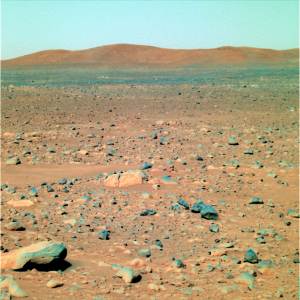
My composition from [http://www.lyle.org/mars/bysol/2-089.html]raw images
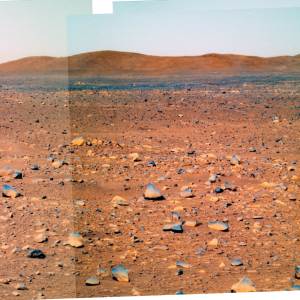
[http://www.lyle.org/~markoff/spirit_index_81_100.html]Marcoff's composition
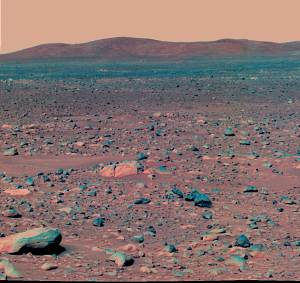
[http://marsrovers.jpl.nasa.gov/gallery/ … 20040408a/]NASA composition
Details: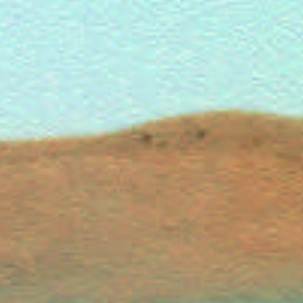
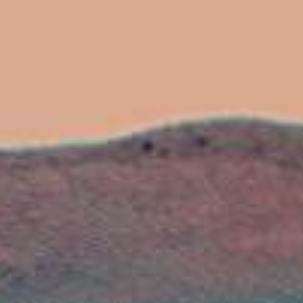
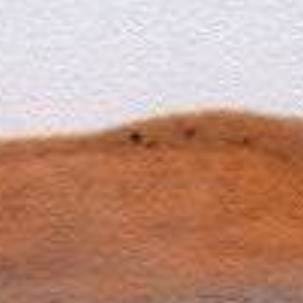

(Last one is raw l7 pancam image).
Why do they hide the sky? There is nothing there!!! :hm: ??? :rant:
Luca :realllymad:
Offline
Like button can go here
#2 2004-04-11 17:15:21
- Mark Friedenbach
- Member
- From: Mountain View, CA
- Registered: 2003-01-31
- Posts: 325
Re: Nasa hoax: why?!?
??
What's you point? Is there supposed to be something in the sky?
Offline
Like button can go here
#4 2004-04-12 03:02:37
- cassioli
- Member
- From: Italy
- Registered: 2004-02-23
- Posts: 218
Re: Nasa hoax: why?!?
??
What's you point? Is there supposed to be something in the sky?
Don't ask me what I am asking to you! ![]()
Luca
Offline
Like button can go here
#5 2004-04-12 03:07:58
- cassioli
- Member
- From: Italy
- Registered: 2004-02-23
- Posts: 218
Re: Nasa hoax: why?!?
And how do you know the sky is hidden? I don't see what is missing.
-- RobS
Really you don't see it?!? :hm:
Don't you see that in the original images the sky is blue and "noisy", while in NASA's ones is flat and reddish?
Don't you see, in the detail of NASA image, the difference between the upper part of the image, flat and "perfect", and the lower part, irregular and noisy?
It's quite obvious that the sky has been cut and replaced with flat color. If it was just a color matter, it could be "noisy red", but it CAN'T be a flat color, the raw images are VERY noisy!
Look again:
raw image NASA image

Luca
Offline
Like button can go here
#6 2004-04-12 04:32:55
- atomoid
- Member
- From: Santa Cruz, CA
- Registered: 2004-02-13
- Posts: 252
Re: Nasa hoax: why?!?
I dont think they would be doing that kind of wholesale editing of the images (pasting in dull pink skies), especially when everyone outside NASA has teh same data to build with. it seems possible that noise is just getting compressed away by the lossy jpegs Nasa is giving us and however theyre optimizing their compression (i havent tried to colorize with any TIFFs, has anyone else?)
But its true that the sky never quite the shade of blue in NASA's image releases as it is in the same data when its recreated by other hands... A small part of it is the time the image is taken, Mars' sky takes on different color variations depending on the sun's height above the horizon and the amount dust in the atmosphere. but regarding the same picture data being different colors in the hands of NASA: A big part of it has to do with how a user puts the images together. There was [http://www.atsnn.com/story/30048.html]an article a few monts back that dealt with some of these issues.
NASA's color reconstructions are by far the most pink and washed-out images out there, if they are trying to recreate what the human eye would see for these press releases, then they should be doing similar contrast and color corrections like human eyes can. does that mean NASA's images are more or less "accurate"? im not too sure since color is to some extent subjective based on the relative contrasts in the view that effect the retina. Also, the color constructions are composed of only minor part of the data spread that the cameras get from the filters for each frame so its possible that the "human eye" ranges within the contrast range for the particular filter get averaged against the whole in each snapshot, subltley altering their color when the differnt filters are put together: look at [http://www.lyle.org/~markoff/collection … aHills.jpg]Crotty's columbia hills panorama and youll see a signifficant range of pink to blue sky in the different frames in the same panorama that, even though he seems to have a consistent method for recreating the proper spectrum, might be due to these same frame-filter-specific differences. after all the color differences couldnt be there visible on mars to the human eye, would they? maybe if it were sunset or something but its only an hour or two from high noon in this panorama so the sky colors shoudl be uiform, yet they arent. its most likely due to the particulars of the contrast ranges in the ground within the image that affects the exposure and shifts the rgb values a bit. so if there wasnt that bright area in this frame then the contrast might have been less extreme and the camera wouldnt have shortened the exposure time and thus gotten less red in that image when that filter was on that made that dark area less dark as it is with the other filter so it affected the exposure for that filter only, that kind of stuff i guess, this explanation is still less than satisfactory to me though...
"I think it would be a good idea". - [url=http://www.quotationspage.com/quotes/Mahatma_Gandhi/]Mahatma Gandhi[/url], when asked what he thought of Western civilization.
Offline
Like button can go here
#7 2004-04-12 10:55:48
- SBird
- Banned
- Registered: 2004-03-10
- Posts: 490
Re: Nasa hoax: why?!?
I've seen this objection raised before and I haven't seen a good explanation for it yet. The skies have clearly been edited out and I'm not sure why. My guess is that it's a PR thing - people expect red Martian skies and so we give then red Martian skies. It's still vaugely disturbing, though.
Offline
Like button can go here
#8 2004-04-12 11:56:34
- Mark Friedenbach
- Member
- From: Mountain View, CA
- Registered: 2003-01-31
- Posts: 325
Re: Nasa hoax: why?!?
That's just jpeg compression you're looking at. You're "raw" image isn't raw at all--it's highly compressed jpeg. You can even see the compression blocks.
As for the color, NASA's images look pink and washed out because to the human eye Mars would look pink and washed out. The raw images have more contrast because the cameras are designed to work in the range of light available on the martian surface.
Offline
Like button can go here
#9 2004-04-12 12:19:03
- SBird
- Banned
- Registered: 2004-03-10
- Posts: 490
Re: Nasa hoax: why?!?
That still doesn't explain why the compression blocks are present on the ground but present in the sky, though.
Offline
Like button can go here
#10 2004-04-12 13:03:31
- Rxke
- Member
- From: Belgium
- Registered: 2003-11-03
- Posts: 3,669
Re: Nasa hoax: why?!?
Hmmm... Both that 1st and 3rd picture have a compression-ratio of about 1:20, but the NASA one is 100dpi, while yours is 72... still they're both 17kb!
If the sky is prety bland, it is possible to lose all detail through such compression...
But i found something interesting: while it looks like one orange colour, it is not: do the test in a paint program, be sure to set your paintbucket or whatever filling thing to minimum tolerance (0) choose black or another dark colour, and go to the upper part of the pic, click, and you will see one big rectangular... So it *is* overcompression, fairly (too) heavy one, and it makes things look unreal... blockyness at i's worst, so to say...
with all the pseudo-raw stuff around, it's hard to say what is noise and what is not...
Offline
Like button can go here
#11 2004-04-12 17:23:55
- Mark Friedenbach
- Member
- From: Mountain View, CA
- Registered: 2003-01-31
- Posts: 325
Re: Nasa hoax: why?!?
As a programmer who has worked with compressed image formats, I can tell you that blocks will compress to a constant or near-constant color if there is little significant detail and a high compression ratio. In addition, NASA likely ran some high- and low-pass filters over the raw images to get rid of instrument error, which would have significantly lessened the entropy (detail) per compression block, making it more likely for the image compressor to approximate with a constant color.
Offline
Like button can go here
#12 2004-04-13 04:54:47
- cassioli
- Member
- From: Italy
- Registered: 2004-02-23
- Posts: 218
Re: Nasa hoax: why?!?
I dont think they would be doing that kind of wholesale editing of the images (pasting in dull pink skies), especially when everyone outside NASA has teh same data to build with. it seems possible that noise is just getting compressed away
I think compression should INCREASE noise...
[...]but regarding the same picture data being different colors in the hands of NASA: A big part of it has to do with how a user puts the images together. There was [http://www.atsnn.com/story/30048.html]an article a few monts back that dealt with some of these issues.
I don't mind the color, I am looking just at the noise: if there is noise in R, G, and B components, it MUST be present also in RGB composition!
But maybe other users of this forum proposed the right explanation: there are no raw images available on Internet, only COMPRESSED raw images, while probably NASA built that panorama from REAL raw images, with no noise... although it still looks quite difficult that the sky is actually so flat, with no color variations (blue or pink, it is not important).
Luca
Offline
Like button can go here
#13 2004-04-13 04:56:04
- cassioli
- Member
- From: Italy
- Registered: 2004-02-23
- Posts: 218
Re: Nasa hoax: why?!?
That's just jpeg compression you're looking at. You're "raw" image isn't raw at all--it's highly compressed jpeg. You can even see the compression blocks.
As for the color, NASA's images look pink and washed out because to the human eye Mars would look pink and washed out. The raw images have more contrast because the cameras are designed to work in the range of light available on the martian surface.
The strange thing is that I can see compression blocks in the lower part of NASA image (terrain), but not in upper part (sky). ???
Luca
Offline
Like button can go here
#14 2004-04-13 05:34:52
- Rxke
- Member
- From: Belgium
- Registered: 2003-11-03
- Posts: 3,669
Re: Nasa hoax: why?!?
The strange thing is that I can see compression blocks in the lower part of NASA image (terrain), but not in upper part (sky). ???
It's not because you don't see them, they aren't there! it's just the colours are very close together
They *are* there, go to any image enhancement program, and play with the contrast of the sky, you will see blockyness...
HUGE blockiness, but that's typical for compression of a 'flat' picture.
And compression algorithms have problems with compressing noisy pictures, but it does *Not* add noise.
Noise and the blockyness of the sky you see are different things, originally there'd be gazillion noisy pixels, now after compression (the non-nasa pics) its 'just' a bunch of relatively big blocks you see... but there are definitely less of those 'random' blocks than there was noisy pixels in the original. it looks noisy, but in fact it is less, but that' s nit-picking, because of course, we're talking about noise "in the eye of the beholder", not absolute levels etc...
Offline
Like button can go here
#15 2004-04-13 05:47:44
- Rxke
- Member
- From: Belgium
- Registered: 2003-11-03
- Posts: 3,669
Re: Nasa hoax: why?!?
Hmmm... i take everything i said back (almost everything)
it is *not* compression, b'cause the higher-res pics have it too. it is definitely tampered with...
they just 'cut' out the sky... And on some pics quite clumsy, to boot... And it seems t be only in the colour pics, though i recall something similar in one of the first pics from either Spirit or Opportunity... There was a big white 'cut' out of the sky, ...
but why are they doing it? My best guess is maybe they're tired about the incessant blue/red discussions of said sky???
Offline
Like button can go here
#16 2004-04-13 08:51:16
- Julius Caeser
- Member
- From: Malta
- Registered: 2004-03-25
- Posts: 105
Re: Nasa hoax: why?!?
I've been following the discussion regarding colour pics of Mars at Gusev...in fact i'm really quite puzzled myself as to the true look of this martian panorama.Are the plains ahead really green..even some roocks seem to be green!As regard dune fields inside Bonneville crater,do those look green as i've seen in some pics???Any thoughts? ???
Offline
Like button can go here
#17 2004-04-13 12:59:52
- bolbuyk
- Member
- From: Utrecht, Netherlands
- Registered: 2004-04-07
- Posts: 178
Re: Nasa hoax: why?!?
One of the problems with 'how does Mars really look' is that color is not a physical property. Frequency is, and each color consist of a blend (or in special cases: just one) of frequency's of electromagnetic radiation.
Anybody who has read about transmitting the simple color-TV pictures knows that's a difficult issue to send colors properly. The fact we consider three 'main colors' is only due to the biological properties of our retina. Many animals see one or two main-colors and a dove sees five.
:bars2: :bars3: :bars:
Offline
Like button can go here
#18 2004-04-13 14:09:02
- Mark Friedenbach
- Member
- From: Mountain View, CA
- Registered: 2003-01-31
- Posts: 325
Re: Nasa hoax: why?!?
it is *not* compression, b'cause the higher-res pics have it too. it is definitely tampered with...
they just 'cut' out the sky... And on some pics quite clumsy, to boot... And it seems t be only in the colour pics, though i recall something similar in one of the first pics from either Spirit or Opportunity... There was a big white 'cut' out of the sky
No they didn't "just cut out the sky," they ran a few filters over it. NASA filters all the images they get back, to compensate for instrument noise. A lot of the low-level and high-level noise is reduced, and the picture is a lot more accurate. Then when run through the compression algorithm the compression blocks have a lot less entropy, the jpeg compressor decides the differences are too small for the human eye to percieve, and the result is constant color compression blocks (which help make the image smaller).
There's no need for conspiracy theories. NASA isn't tampering images, they're just running standard filters over instrument data and then color correcting to get the pictures they release (both of which lower entropy of the picture).
Julius Ceasar - Are you sure those are true color pictures?
bolbuyk - Color isn't a physical property, but we can still figure out what Mars would subjectively look like, by comparing the frequencies encountered on mars to those encountered here on earth.
Offline
Like button can go here
#19 2004-04-13 15:01:25
- bolbuyk
- Member
- From: Utrecht, Netherlands
- Registered: 2004-04-07
- Posts: 178
Re: Nasa hoax: why?!?
This is quite a hard job, because the sensitivity of the three color-sensors has to be the same as that of the human eye. Calibration can go wrong, because it's in fact never totally sure that the reproduced color of a screen represents the same mix of frequncy's. Exact calibrating needs strictly for every color a particular mix of calibration-values. Compromises have to be made. In color-transmitting of television-signals it's even a problem. That's one of the reasons televison-white is a little blueish. But no doubt...... Mars is red!!! :rant:
Offline
Like button can go here
#20 2004-04-14 03:00:25
- cassioli
- Member
- From: Italy
- Registered: 2004-02-23
- Posts: 218
Re: Nasa hoax: why?!?
This is quite a hard job, because the sensitivity of the three color-sensors has to be the same as that of the human eye. Calibration can go wrong, because it's in fact never totally sure that the reproduced color of a screen represents the same mix of frequncy's. Exact calibrating needs strictly for every color a particular mix of calibration-values. Compromises have to be made. In color-transmitting of television-signals it's even a problem. That's one of the reasons televison-white is a little blueish. But no doubt...... Mars is red!!! :rant:
My simple 800$ digital camcorder has a nice feature called "auto white balance": you point it to a white sheet, you click the button, and - tah-dah! - :band: you have your colors automaGically balanced, just as human eye does when looking at differently enlightened scenes! If I don't use auto-white-balance, if I shoot pictures INSIDE home they look yellowish, due to artificial illumination; but, after the auto-balance, white objects appear white, no more yellow.
Didn't they have some hundreds of bucks out of those 800 million, to add a simple commercial camcorder to all those instruments?... ???
This would have also solved another simple problem: if there was something moving (!) around the rovers, we'll never know, just because they can't shoot frames quick enough...
They could be even surrounded by martian bugs looking like little rocks, and we would never know, as rovers have no life-detection or motion-detection systems! Maybe they were too expensive... but it's quite interesting how a simple 800 bucks instrument would have solved these problems! ![]()
Luca
Offline
Like button can go here
#21 2004-04-14 05:59:54
- Shaun Barrett
- Member
- From: Cairns, Queensland, Australia
- Registered: 2001-12-28
- Posts: 2,843
Re: Nasa hoax: why?!?
Hi Cassioli!
It's interesting you should mention animals moving around near the MERs; especially rock-shaped ones. I remember speculation by scientists, including the illustrious Dr. Carl Sagan, which included just such a scenario.
The idea was that primitive animals may have gradually developed hard rock-like shells as the climate on Mars became inexorably worse over the eons. The shells would protect them from the harsh UV light by day and offer shelter from the intense cold by night.
One can certainly visualise such creatures being effectively invisible to the MER cameras, unless two consecutive shots happened to pick up a 'rock' changing position.
However, in view of the characteristics of the soil, visible in the pictures we've seen so far, there would surely be tell-tale tracks in the sand to alert us to the movement, wouldn't there?
One more objection to the idea is that animals require food; herbivores need large amounts of vegetation and carnivores need proportionately larger numbers of herbivores to prey upon. Leaving aside the complexities of the carnivore/herbivore ratio, is there enough vegetation to sustain even quite small herds of browsing 'rocks'? So far, I haven't seen any incontrovertible signs of vegetation at all.
While it would be interesting to see 'auto white balance' pictures of the sky on Mars (I'm one of the heretics who think the martian sky is probably blue-tinged quite often, when airborne dust levels are low enough) and panoramic movies in glorious colour, I don't think we'd actually see anything moving. There's just no food for animals to feed on.
The word 'aerobics' came about when the gym instructors got together and said: If we're going to charge $10 an hour, we can't call it Jumping Up and Down. - Rita Rudner
Offline
Like button can go here
#22 2004-04-14 06:32:03
- bolbuyk
- Member
- From: Utrecht, Netherlands
- Registered: 2004-04-07
- Posts: 178
Re: Nasa hoax: why?!?
My simple 800$ digital camcorder has a nice feature called "auto white balance": you point it to a white sheet, you click the button, and - tah-dah! - :band: you have your colors automaGically balanced, just as human eye does when looking at differently enlightened scenes! If I don't use auto-white-balance, if I shoot pictures INSIDE home they look yellowish, due to artificial illumination; but, after the auto-balance, white objects appear white, no more yellow.
But that´s the point: It´s corrections are made by just one color, not by all colors possible. That makes that it´s theoreticaaly never exactly possible to deteeeermine the right color. In case of Viking these problems where bigger than yet.
Beside that, more the fact with the Venera´s, even your calibration-sheets on your spacecraft can be wrong, because of filtered sunlight or dust in the air or on your sheets.
Offline
Like button can go here
#23 2004-04-14 13:16:52
- atomoid
- Member
- From: Santa Cruz, CA
- Registered: 2004-02-13
- Posts: 252
Re: Nasa hoax: why?!?
Hi Cassioli!
It's interesting you should mention animals moving around near the MERs; especially rock-shaped ones. I remember speculation by scientists, including the illustrious Dr. Carl Sagan, which included just such a scenario.
The idea was that primitive animals may have gradually developed hard rock-like shells as the climate on Mars became inexorably worse over the eons. The shells would protect them from the harsh UV light by day and offer shelter from the intense cold by night.
One can certainly visualise such creatures being effectively invisible to the MER cameras, unless two consecutive shots happened to pick up a 'rock' changing position.
However, in view of the characteristics of the soil, visible in the pictures we've seen so far, there would surely be tell-tale tracks in the sand to alert us to the movement, wouldn't there?
One more objection to the idea is that animals require food; herbivores need large amounts of vegetation and carnivores need proportionately larger numbers of herbivores to prey upon. Leaving aside the complexities of the carnivore/herbivore ratio, is there enough vegetation to sustain even quite small herds of browsing 'rocks'? So far, I haven't seen any incontrovertible signs of vegetation at all.
:hm: Shells... makes sense, Carl Sagan surprises me again! This brings me back to [http://www.lyle.org/mars/imagery/1M1289 … 1.JPG.html]the first MI image of the soil from Opportunity, shows a small object a tiny bit to the upper right of the center of the image. My first impression back then was "looks strikingly like a snail shell, but no, it couldnt be..." since it has a certain degree of radial symmetry of divets, much like a sea-snail shell does, there also happens to be another similarly-sized object just above and to the right of it that also has a similarly interesting symmetry of indentations. My instinct was to discount this as cooincidence and figure that these are just vessicle-riddled tectites or something. But if there was macroscopic multicellular surface life on Mars way back, then its not at all too much of a stretch, but perhaps may be the rule, that it would adapt in later stages, as the atmospheric protection dwindled, to move to shelled forms such as this... if so, then there would (should?) be a larger poulation of these lying around in the sand but i havent seen any more (or maybe i havent looked hard enough) i'd expect all of them to be long-dead, though!
"I think it would be a good idea". - [url=http://www.quotationspage.com/quotes/Mahatma_Gandhi/]Mahatma Gandhi[/url], when asked what he thought of Western civilization.
Offline
Like button can go here
#24 2004-04-15 01:33:11
- cassioli
- Member
- From: Italy
- Registered: 2004-02-23
- Posts: 218
Re: Nasa hoax: why?!?
Hi Cassioli!
It's interesting you should mention animals moving around near the MERs;[...]
One can certainly visualise such creatures being effectively invisible to the MER cameras, unless two consecutive shots happened to pick up a 'rock' changing position.
However, in view of the characteristics of the soil, visible in the pictures we've seen so far, there would surely be tell-tale tracks in the sand to alert us to the movement, wouldn't there?
Good point... ![]()
One more objection to the idea is that animals require food; herbivores need large amounts of vegetation and carnivores need proportionately larger numbers of herbivores to prey upon. Leaving aside the complexities of the carnivore/herbivore ratio, is there enough vegetation to sustain even quite small herds of browsing 'rocks'? So far, I haven't seen any incontrovertible signs of vegetation at all.
...bluberries?
Ok, I'm joking...
While it would be interesting to see 'auto white balance' pictures of the sky on Mars (I'm one of the heretics who think the martian sky is probably blue-tinged quite often, when airborne dust levels are low enough) and panoramic movies in glorious colour, I don't think we'd actually see anything moving. There's just no food for animals to feed on.
I wonder why Polar Lander had a microphone installed... ![]() To listen to the wind?...
To listen to the wind?...
Luca
Offline
Like button can go here
#25 2004-04-15 01:40:07
- cassioli
- Member
- From: Italy
- Registered: 2004-02-23
- Posts: 218
Re: Nasa hoax: why?!?
My simple 800$ digital camcorder has a nice feature called "auto white balance": you point it to a white sheet, you click the button, and - tah-dah! - :band: you have your colors automaGically balanced, just as human eye does when looking at differently enlightened scenes! If I don't use auto-white-balance, if I shoot pictures INSIDE home they look yellowish, due to artificial illumination; but, after the auto-balance, white objects appear white, no more yellow.
But that´s the point: It´s corrections are made by just one color, not by all colors possible. That makes that it´s theoreticaaly never exactly possible to deteeeermine the right color.
I think this is the method used by human eyes to make "color calibration": this is the reason for which it is used in camcorders.
When I look around inside my home, ALL objects are enlightened by yellow lights, so ALL colors are changed with the same yellow-factor: when I make "white-balance", I subtract the exceeding yellow component from all objects I look at, so I don't feel like looking at yellow landscape (but I catually see a yellow landscape into my camcorder, if I don't make white balance!).
I suppose the same would happen on Mars: as soon as I would arrive on Mars, I would see all reddish, but then my eyes would adjust ("white-balance"), and I would see "true colors"... or not?!? ???
In case of Viking these problems where bigger than yet.
What are you talking about?
Beside that, more the fact with the Venera´s, even your calibration-sheets on your spacecraft can be wrong, because of filtered sunlight or dust in the air or on your sheets.
See above.
Luca
Offline
Like button can go here